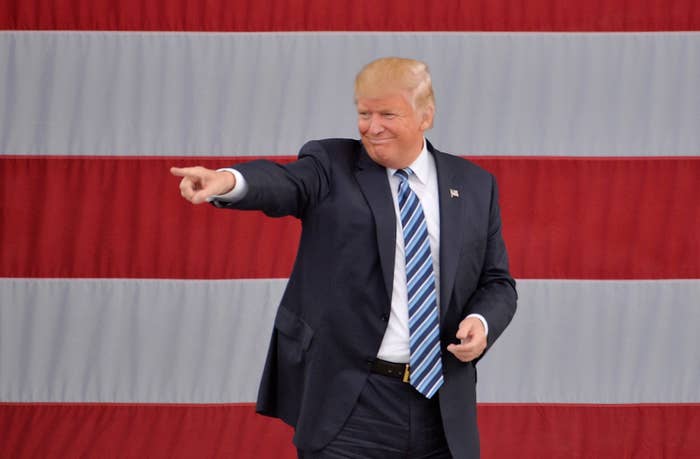
Donald Trump has rolled out his plan to solve the country's student debt crisis — and the policy sounds very similar to one trumpeted by the Obama administration, with more potential perks for wealthier borrowers, and more cost to taxpayers.
In a speech Thursday night that was pitched as an address to millennial voters, Trump delved into unusually specific details when discussing his student loan proposal. He called college debt an "albatross" around the necks of young voters, and as a solution, he proposed a modified version of the Obama administration's income-based repayment system.
Income-based repayment caps monthly student loan payments at a fixed percentage of income, and sets a deadline upon which remaining debt will be wiped away. Trump's modification of the system would require borrowers to pay a slightly higher portion of their income every month — 12.5%, versus the current 10% — but in return, would clear their debt after after just 15 years of payments, rather than 20.
Trump stressed that the plan was a work in progress. "Everything's a negotiation, folks, you know that," he said. "We're going to work it out big-league."
The changes Trump is proposing would provide the biggest breaks to borrowers with high student-loan balances, who are mostly graduate students, said Jason Delisle, a fellow at the conservative American Enterprise Institute. Delisle said it would do little to nothing for low-income borrowers compared to Obama's plan.
"It's the Obama administration policies 2.0, but it's more expensive than what Obama is proposing," he told BuzzFeed News. "This would be a very big increase in spending."
A borrower with a $70,000 student loan balance, for example, and a relatively high income, would have more than $4,000 forgiven under the Trump plan, but would pay the full loan balance under Obama's longer, 20-year cycle. At a $100,000 balance and slightly higher income, the Obama administration would forgive $18,700 in loans; Trump's plan would forgive $25,350.
Trump was short on specifics on how he would pay for the increase in federal spending. An aide told CNN that the cost would be covered "by lowering federal spending on ever-rising college tuition."
But the vast majority of the federal government's spending on higher education — a public service which is mostly paid for by states — comes in the form of the subsidized federal student loan program, where Trump is planning to significantly increase costs. "He's proposing cutting spending [on loans] to pay for increasing spending" on loans, said Mark Huelsman, a senior policy fellow at the left-leaning Demos Foundation. "It doesn't really work."
The fuzzy math is something Trump shares with Democratic nominee Hillary Clinton, who has not given many details about how she would fund her own free public college proposal. Experts have said the plan would be costly and complicated to pull off.
Trump said in the speech that he would drive down costs at colleges by "reducing administrative bloat" and "unnecessary compliance costs" that were imposed on colleges by the federal government. He also said he would require colleges with large endowments to spend more on students rather than in fees to the "hedge fund managers" that invest their money.
Though endowment sizes have drummed up a large share of controversy, including among Republicans in Congress who have proposed requiring schools to spend more on student aid, only a tiny fraction of the country's students attend schools with large endowments. Most American schools have little to no endowment.
